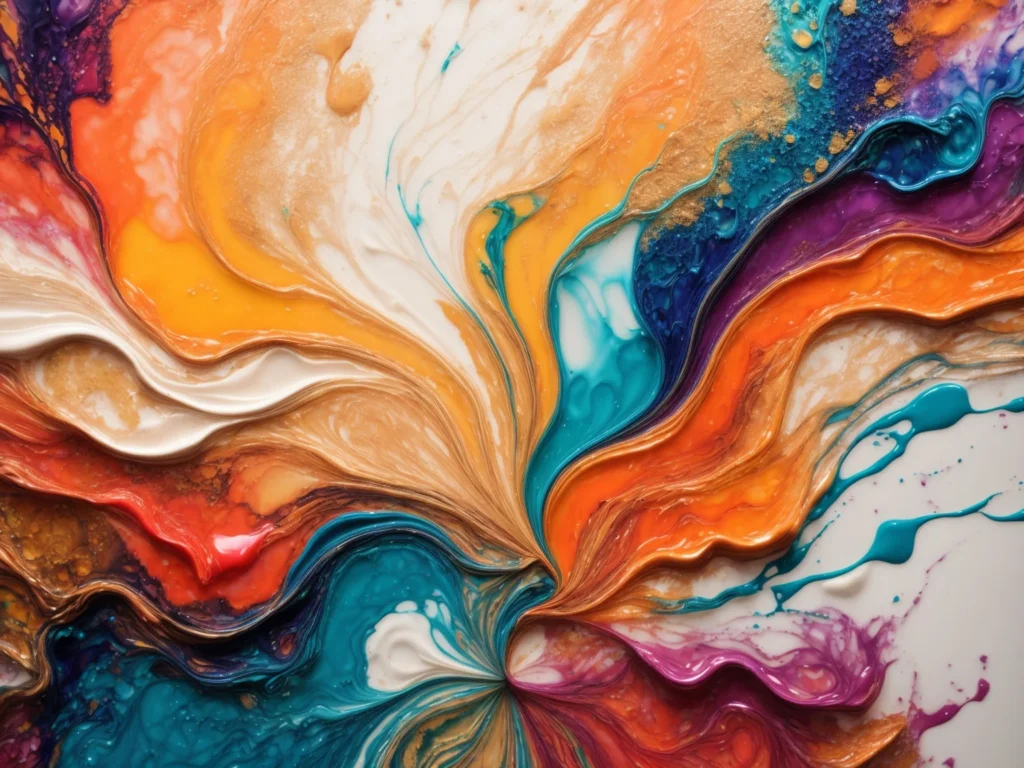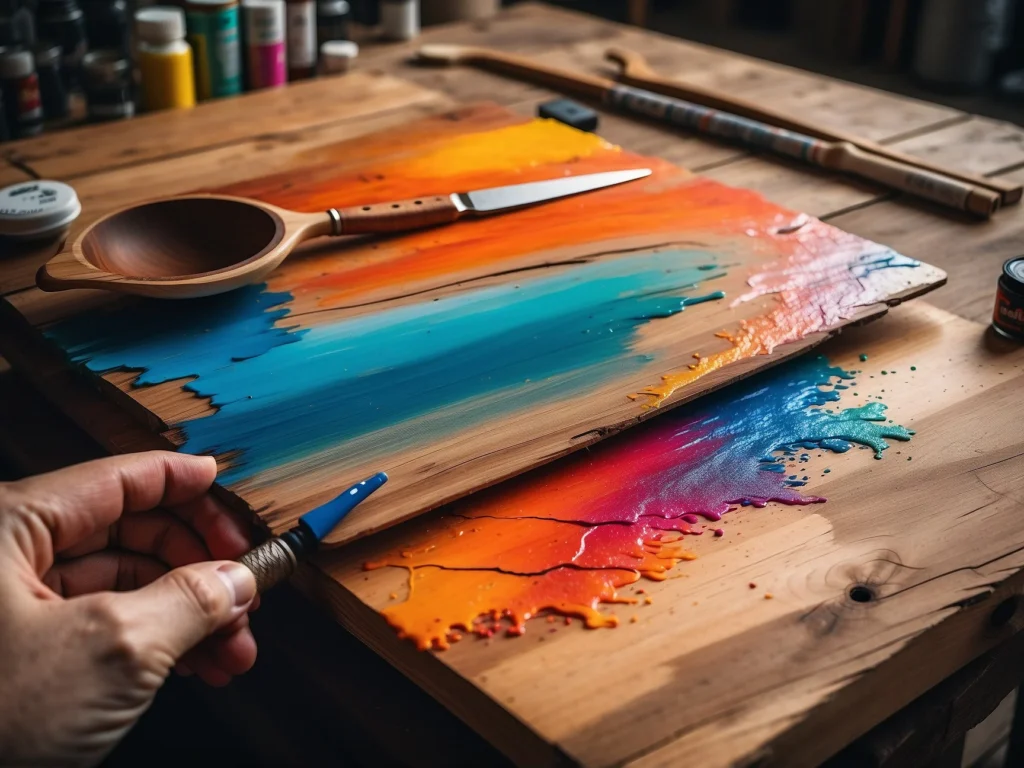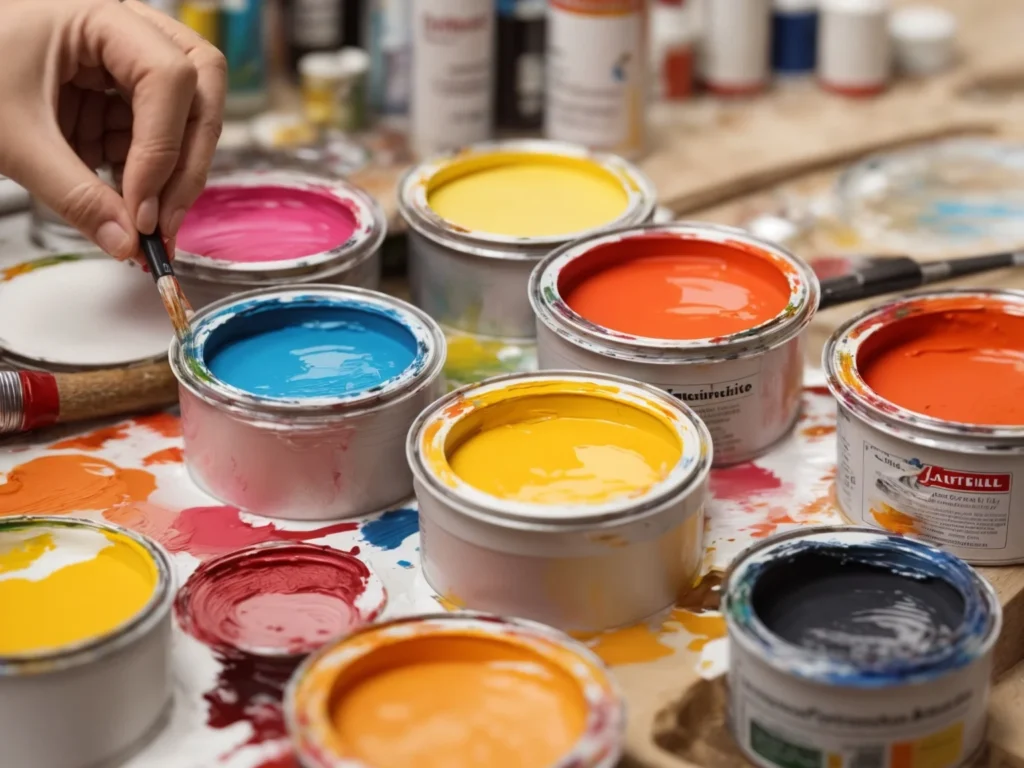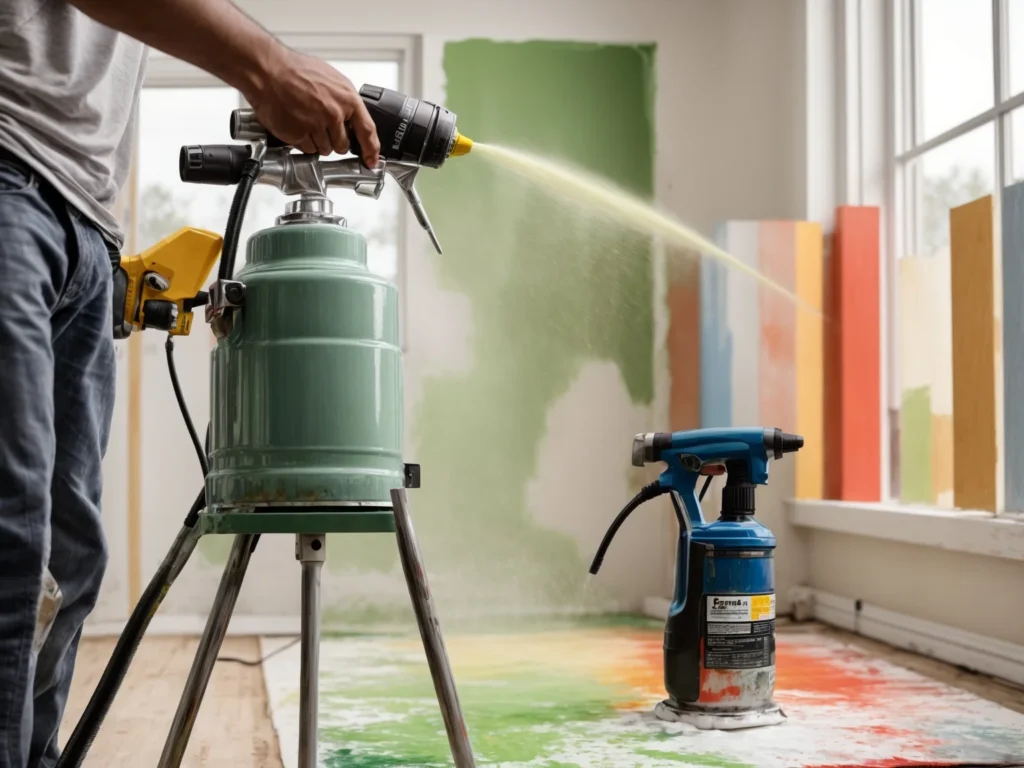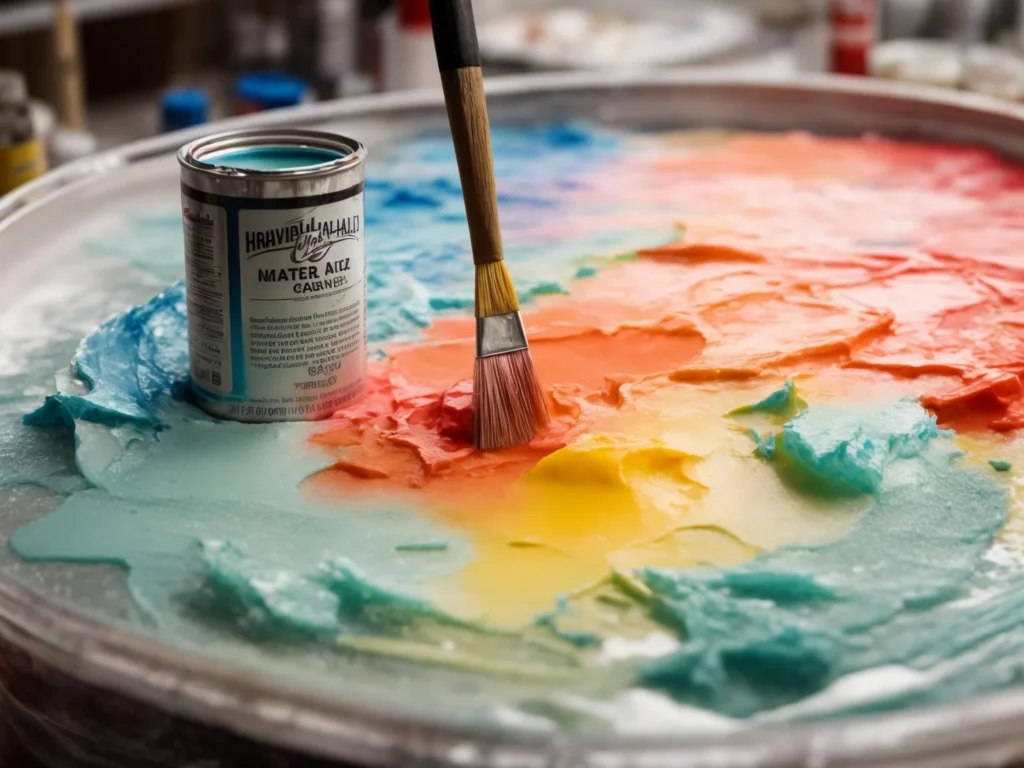Painting glass windows can transform them into beautiful works of art or provide privacy and UV protection. With the right paints and proper preparation, it’s easy to paint designs, patterns or opaque coats onto interior and exterior glass surfaces.
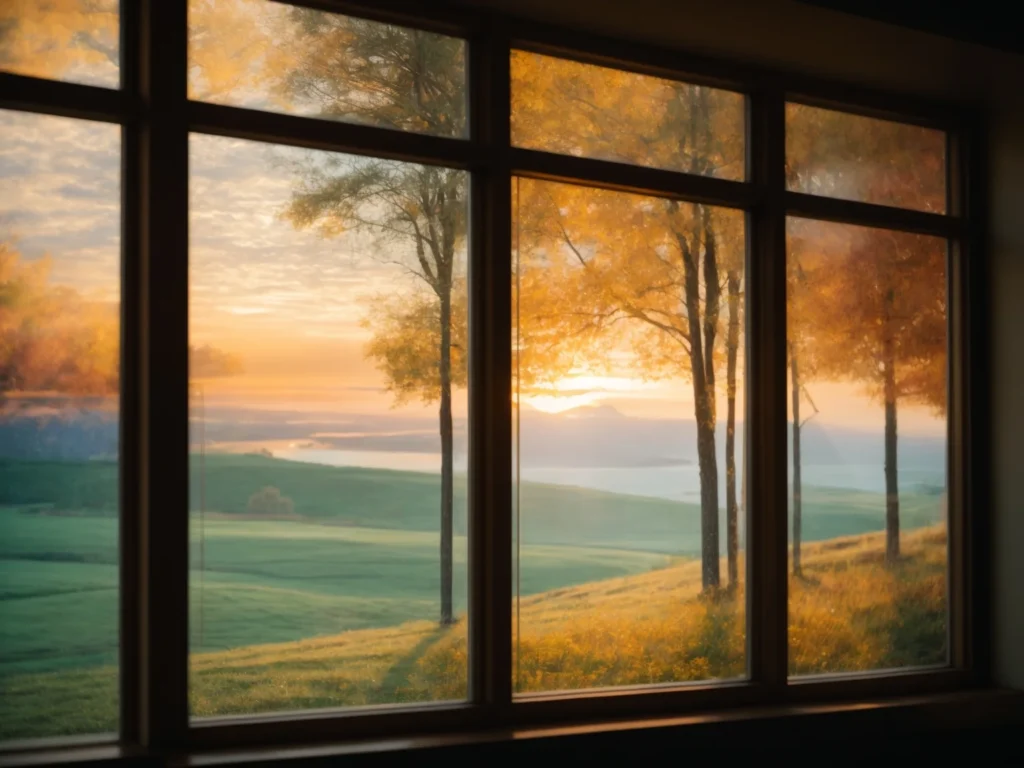
This comprehensive guide covers everything you need to know about painting glass windows, from choosing the right paints and tools to surface preparation, application techniques, and maintenance. Whether you want to add artistic flair or block sunlight, let’s explore how to paint temporary and permanent designs on these slick surfaces.
Painting Interior vs. Exterior Glass
When painting glass windows, an important first step is deciding which side of the glass you want to paint—the interior or exterior surface.
Painting the interior side is best for decorative purposes, artistic designs, or adding colorful privacy to windows. Painting inside can transform plain glass into stained glass mimics or display unique patterns and art. Interior paint is protected from the elements, retaining its color and design over time.
Painting the exterior side is ideal for blocking sunlight, preventing UV damage, or increasing privacy. Opaque exterior paints cover rain, wind, snow, and sun exposure. Exterior paints are formulated to flex and withstand temperature changes without chipping or peeling.
So consider which side of your glass windows you want to be visible before selecting paints and techniques. Both interior and exterior paints can bond well to glass as long as proper preparation steps are followed.
Supplies Needed for Painting Glass Windows
Painting glass requires a few special supplies beyond just paint. Gather these materials before starting your project:
- Paint formulated for glass – Acrylic, enamels, or auto paints designed for smooth glass work best
- Paintbrushes – Foam brushes or small tipped brushes
- Primer – Helps paint adhere, especially for exterior surfaces
- Painter’s tape – Masks off straight edges and creates patterns
- Stencils – Provides shapes and designs for decorative painting
- Sandpaper or steel wool – Lightly scuffs glass for paint adhesion
- Glass cleaner – Removes oils for optimal paint bonding
- Plastic drop cloth – Protects surrounding surfaces from drips
- Sealant or finish – Like polycrystalline or Mod Podge to seal painted glass
Preparing Glass Surfaces for Painting
Proper preparation is crucial for creating a long-lasting painted finish on glass. Follow these steps:
Clean the glass thoroughly with glass cleaner or rubbing alcohol to remove grease, dirt, and impurities. These can interfere with proper paint adhesion. Wipe down both interior and exterior glass surfaces.
Lightly scuff the surface with fine sandpaper or steel wool. This roughens up the ultra-smooth glass so paint can bond tightly. Be gentle to avoid scratching.
Wipe off dust with a dry cloth after scuffing. Make sure the glass is perfectly clean before painting.
Apply painter’s tape around the edges to create clean painted lines or patterns. Press down tape firmly.
Spot-test paint adhesion on a small corner of the glass. Ensure it sticks before completing the whole project.
Prime exterior glass using a clear glass primer. This gives topcoats of paint an optimal surface to bind to while allowing light to pass through still.
With proper prep work, you’ll have a perfectly slick canvas ready for paint application and designs.
Best Paint Options for Glass Windows
Choosing a paint designed specifically for glass is paramount to getting great results. The wrong paint can chip, peel, or rub off easily. Here are the best paint options:
Acrylic craft paints come in endless colors and work well for temporary interior art. They brush on smoothly and clean up with water. If sealed, they can last years without yellowing before needing touch-ups. Start with brands formulated for glass, like FolkArt Enamels.
Acrylic enamel paints provide a strong, flexible, and permanent layer of color. Used on both interior and exterior windows, they resist chipping, fading, and scratches. Behr and Rust-Oleum are quality options. Multiple coats create an opaque finish.
Auto and appliance paints formulated for glass provide industrial-level adhesion and durability. Ideal for exterior surfaces, they withstand weathering for long-lasting color. Brands like Valspar Appliance Touch-Up paint work well.
Glass spray paints quickly coat large exterior surfaces with opaque, UV-resistant color. Types like Krylon Fusion for Glass provide flawless coverage with a matte finish. Shake cans thoroughly before use.
Glass marking paint pens create hand-painted designs on interior windows. Available in metallic, neon, and other colors, they work like permanent markers on glass.
Avoid using oil-based enamels, standard spray paints, or acrylic wall paints not specifically made for glass—they won’t adhere well. Stick with paints formulated for the slick, hard surface of glass windows.
Techniques for Applying Paint to Glass
Once you have the right paint supplies, use these techniques to apply it smoothly and accurately:
Use foam brushes and small-tipped brushes suitable for detail work. Avoid using stiff, rough brushes. Lay down even coats of paint in one direction without overbrushing.
Apply paint in thin layers, slowly building up opacity and color intensity. Thick globs can drip or slide off slippery glass. Let layers fully dry between coats for best results.
Keep spray paint cans 6-10 inches from the glass to avoid drips and runs. Apply light, even coats using a side-to-side motion. Always spray exterior windows outdoors for proper ventilation.
Use painter’s tape to create geometric designs or block off sections for color blocking. Paint up to the edges, let dry, then carefully remove the tape.
Paint the edges of interior glass by running a foam brush along the side. This gives the paint an embedded surface to grip.
Try layering colors for custom hues. For example, paint yellow over blue glass for a green effect. Work lightest to darkest color for translucent mixing.
Let paint fully cure for at least 24-48 hours before removing stencils, tape, or adjacent masking. This prevents lifting any uncured paint.
You’ll learn the nuances of applying paint smoothly to glass with some practice and patience. Take your time for best results.
Decorative and Privacy Painting Techniques
Beyond just spraying or brushing on solid coats of paint, you can create all kinds of artistic effects on glass. Try these fun techniques:
Stenciling – Cut custom stencils from cardboard, vinyl, or thick plastic. Tape them on, spray or brush over them, let dry, then remove to reveal shapes like stars, words, or animals.
Freehand designs – Use glass marking pens to draw dots, swirls, plants, animals, or abstract shapes. Follow the “lead” lines of the pens.
Stripes or geometric patterns – Tape off angled stripes or diagonal lines before painting between them. Create diamonds, zigzags, or color blocking.
Etching cream – Use etching cream or paste to “frost” glass in specific areas, leaving surrounding glass transparent. Rinse off after 5-15 minutes for a etched look.
Window film – Apply colored, patterned, or frosted window films to create instant designs and privacy. Use in children’s rooms or bathrooms.
Faux stained glass – Use acrylic paints to outline “leading” strips between colored glass panes. Trace with black for dramatic effects.
Let your creativity run wild! Painted glass windows provide the perfect versatile canvas for artistic expression or establishing privacy.
Sealing and Protecting Painted Glass
The final step is sealing your painted glass artwork to protect and help it last. Choose a clear topcoat that suits your needs:
Polycrylic sealer provides a waterproof, protective shield ideal for outdoor paints. It resists yellowing and scratches. Use a spray-on product for smooth application.
Mod Podge works perfectly for indoor acrylic paints. Brush over the paint, let dry, then add a second coat to seal the art and create a glossy finish.
Clear acrylic enamel brushed over interior art provides a tough, chip-resistant seal. It also enhances vibrancy of the underlying paint.
Glass varnish products like Triple Thick provide a durable, crystal clear finish for indoor and outdoor paints. Use an outdoor grade for longevity outside.
Reapply sealants every 2-3 years on exterior windows or as needed indoors. This protects painted glass from moisture damage, scratches, and color fading over time.
Maintaining and Removing Painted Glass Finishes
Painted glass requires minimal maintenance if sealed properly. Here are some care tips:
- Gently dust sealed paint with a microfiber cloth to keep it looking clean
- Use mild soap and water if needed to spot clean any dirt or grime, avoiding abrasive scrubbing
- Touch up any paint chips by lightly sanding and spot painting the area then resealing
- Repaint window frames and trim seals regularly to avoid moisture seeping under the glass paint
- Reapply fresh sealant every few years per manufacturer instructions
- Check for any cracks or gaps in the sealant and touch up as needed
To remove or change painted glass window finishes:
- For temporary paints, use a razor blade to gently scrape off paint. Be careful not to scratch the glass.
- Use ammonia-based glass cleaners to dissolve and wipe away acrylic craft paints. Rinse any haze away.
- Apply paint stripper formulated for glass to remove layers of enamel, auto or acrylic paint. Wear gloves and ventilation.
- Use a plastic putty knife to gently pry up paint chips after the stripper sits for 15-30 minutes.
- Wipe down with mineral spirits then glass cleaner to remove any remaining paint residue.
- Try carefully scraping the paint off using steel wool or a plastic scrub pad for thin spray paint coats. Avoid abrasive pads.
- Repainting over existing window paint is possible after proper scuff sanding to help new paint adhere.
With the right products and techniques, painted finishes can be removed from glass windows when desired. Use patience and gentle motions to avoid scratching the glass surface. Proper ventilation and gloves are a must.
Inspiring Examples of Painted Glass Windows
Need some inspiration before tackling your own painted glass project? Here are beautiful examples of painted window designs:
Stenciled florals – Black branch silhouettes painted over white glass creates the look of frosted windows with pink cherry blossom accents.
Mosaic stained glass – Painting “leading” strips between small colored glass panes mimics real stained glass on a budget.
Frosted bathroom window – Coating interior bathroom glass with white frosted paint provides privacy without blocking light.
Faux leaded glass – Carefully painting thin black “leading” lines over different glass paint colors creates dramatic Art Deco and Victorian styles.
Exterior mural – Painting an outdoor underwater ocean scene over a large window brings exciting artwork to neighborhoods.
Interior window art – Let kids create their own masterpieces by painting their windows with acrylic craft paints and tempera.
Geometric shapes – Taping off and painting triangular sections in contrasting colors forms a cool geometric design.
Patterned window film – Instantly add privacy and style by applying repositionable vinyl films printed with patterns, flowers, or mosaic designs.
Whether you desire easy DIY art or total window opacity, painted glass offers endless possibilities! With the right approach, tools, and paint, you can create striking looks for your home or business’ windows.
Frequently Asked Questions About Painting Glass Windows
Can you paint over existing window glass?
Yes, you can paint over existing glass windows on either the interior or exterior side. The key is proper surface prep – clean thoroughly and scuff lightly to help the new paint adhere properly. Using paint formulated for glass provides long-lasting results.
What kind of paint adheres best to slick glass?
Look for acrylic enamel, acrylic craft paints designed for glass, and spray paints specifically made for glass surfaces. Auto paints for glass application also provide excellent adhesion and durability. Avoid using wall, standard spray, or oil-based enamels on glass windows.
How do you frost glass windows?
Frosted glass spray paint designed for windows provides an easy opaque coating that mimics etched or sandblasted glass. For interior use, try using etching cream instead – apply and let sit 5-15 minutes before rinsing for a permanently frosted look.
Can you remove painted glass?
Yes, painted glass can be removed or changed. Use plastic putty knives and razor blades to gently pry up paint chips after applying paint stripper or ammonia-based glass cleaner to temporary acrylic paints. Avoid abrasive pads to prevent scratching the glass underneath.
How long does painted glass last?
With proper surface prep, paint formulated for glass, and a sealed topcoat, painted windows can last 5-10 years or longer on exteriors. Interior art glass maintains its beauty for decades when carefully sealed and handled. Touch up chips as needed.
Final Thought
Painting over glass surfaces allows you to turn ordinary windows into stunning works of art or provide extra privacy. With the right tools and techniques, it’s easy to create all kinds of designs that stand the test of time with minimal maintenance required.
